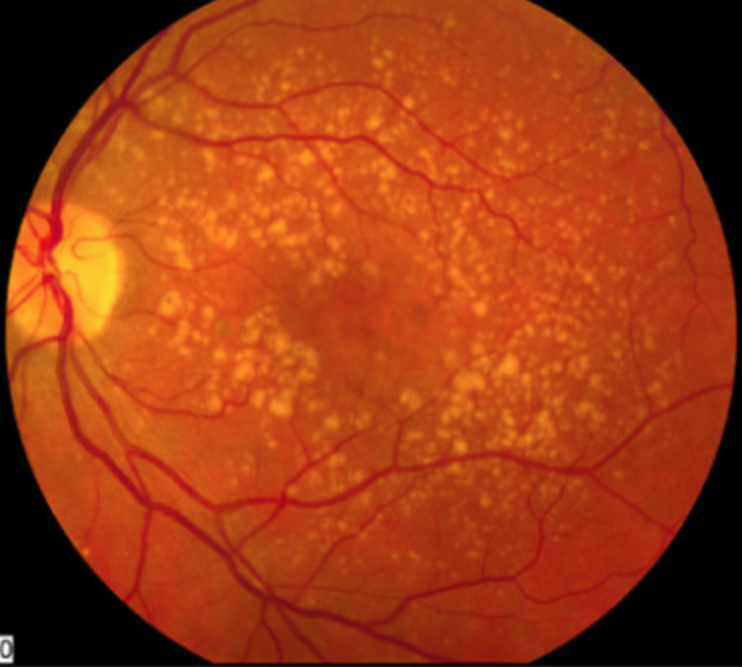 |
| AI is making strides in being able to effectively detect AMD. Photo: NEI. Click image to enlarge. |
The number of neovascular age-related macular degeneration (AMD) patients is expected to rise over the next decade and could pose a challenge to ophthalmology services with the need for increased staff. This may prompt more novel approaches, such as artificial intelligence (AI). In this study, researchers proposed what they believe is the first ever comprehensive system for autonomous follow-up of AMD patients.
A dataset of 200 AMD follow-ups was collected, and each case was re-evaluated by three retina specialists. Agreement between the AI decision and the expert consensus was compared with the original treatment decisions taken in the retina clinic, providing information about the system’s safety. The researchers attempted to determine the potential proportion of AMD patients that could be autonomously followed by the proposed AI system.
The AI model proved superior at detecting disease activity compared with the model without temporal input. The AI-based follow-up system could make an autonomous decision in 73% of the cases, 91.8% of which agreed with expert consensus. This was on par with the 87.7% agreement rate between decisions made in the clinic and expert consensus. Over half of the eyes with AMD could be followed autonomously without additional risk to the patient.
The authors also found significant nonadherence to prescription guidelines in the retina clinic, which was much higher than the experts. They say an advantage of having AI as a follow-up is that it provides regimen-compliant treatment suggestions, which might help deliver equal quality of care to all patients independent of environment and geographical location.
The authors concluded that an AI-based system was able to demonstrate performance on par with the decisions made in the retina clinic, with especially low rates of false positive classification of choroidal neovascularization activity.
“The current results are encouraging; however, a live implementation is needed to establish real-life performance,” the authors concluded. “Even if not deployed to its full potential, the proposed algorithm could greatly ease the pressure on the public ophthalmology departments from an increasing number of AMD patients and be a part of an efficient system for follow-up and treatment in concert with the primary sector services.”
Potapenko I, Thiesson B, Kristensen M, et al. Automated artificial intelligence-based system for clinical follow-up of patients with age-related macular degeneration. Acta Ophthalmol. March 23, 2022. [Epub ahead of print]. |

